Over the past 15+ years numerous research studies have been undertaken into the merits of different
hand drying methods and their implications for hygiene and cleanliness in the washroom and beyond.
The Hand Drying Discovery Roadmap now gathers key studies in one central place
for visitors to the site to access and explore.
The Roadmap centres around a timeline created by Professor Mark Wilcox OBE of Leeds Teaching
Hospitals and University of Leeds, UK, who has led a number of the studies. It charts the evolution of
scientific research into hand drying from 2008 to the present day and offers a unique insight into the
advancement of understanding over the past 15+ years.

DISCOVERY ROADMAP
EXPLOREHAND DRYING
15+ YEARS OF RESEARCH EVOLUTION
READ ON TO DISCOVER MORE
HOW DO HAND DRYING METHODS
COMPARE IN TERMS OF
WATER/MICROBE REMOVAL?
2008
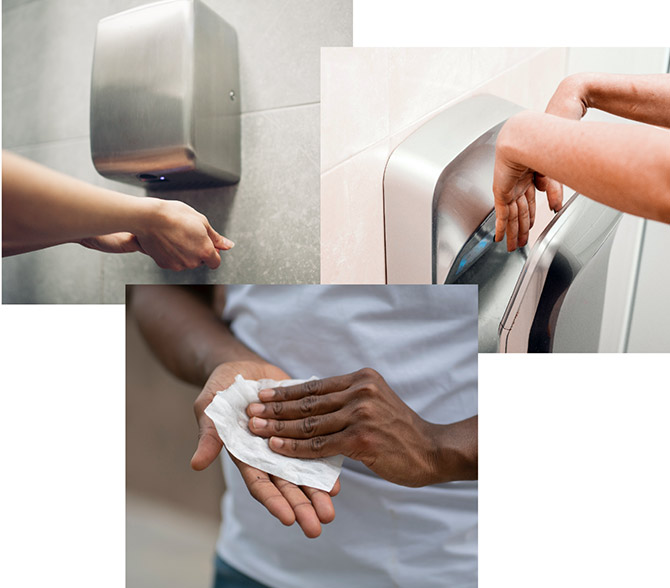
A COMPARATIVE STUDY OF THREE
DIFFERENT HAND DRYING
METHODS: PAPER TOWEL, WARM
AIR DRYER, JET AIR DRYER
Redway K & Fawdar S. University of Westminster, UK
Part B of the study shows that both types of paper towel tested reduced the
mean numbers of all types of bacteria tested on the fingerpads and the palms
of subjects. As shown by other studies, the warm air dryer increased the mean
numbers of all types of bacteria tested on the fingerpads and the palms of
subjects. The jet air dryer also increased the mean numbers of most types of
bacteria tested on the fingerpads and the palms of subjects but the increases
were less than with the warm air dryer.
2011

COMPARATIVE EVALUATION
OF THE HYGIENIC EFFICACY
OF AN ULTRA-RAPID HAND
DRYER VS CONVENTIONAL
WARM AIR HAND DRYERS
A.M. Snelling, T. Saville, D Stevens, CB Beggs. University of Bradford, UK
In part of the study, the use of paper towels consistently outperformed
all the other drying techniques, especially with regard to
bacteria left on the palms and fingertips. This suggests that bacteria
re-populating the surface of the skin during the rubbing process
were being physically removed by the paper towels along with the
moisture (Blackmore 1989; Redway 1994; Taylor et al. 2000). In so
doing, paper towels appear to remove bacteria in a way in which
conventional warm air dryers are incapable of replicating. However, it
should be noted that towels can become highly contaminated (Taylor
et al. 2000), something which in itself could pose a hygiene hazard.
HOW DO HAND DRYING METHODS
COMPARE IN TERMS OF
MICROBE DISPERSAL RISK?
2012
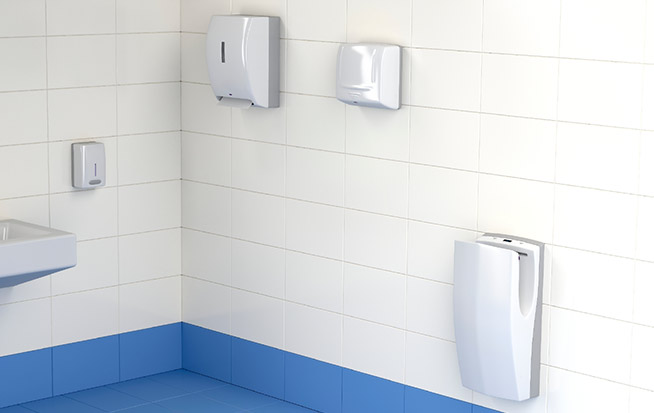
THE MICROBIAL CONTAMINATION OF
THREE TYPES OF DRIER DEVICES IN
THE WASHROOMS
Eurofins-Inlab. Ruhr region, Germany
Found total microbe counts were significantly higher - both on the
surfaces of jet air dryers and the floors beneath them - in comparison
with paper hand towel dispensers. The aerobic bacteria found on jet
air dryers were 1000 times more than those found on paper towels
dispensers. There was also a significant difference between the
counts of staphylococci for the jet air dryers and the paper hand
towel dispenser. The level of contamination on jet air dryers was
aprox. 800 times higher than on paper towel dispensers.
2014
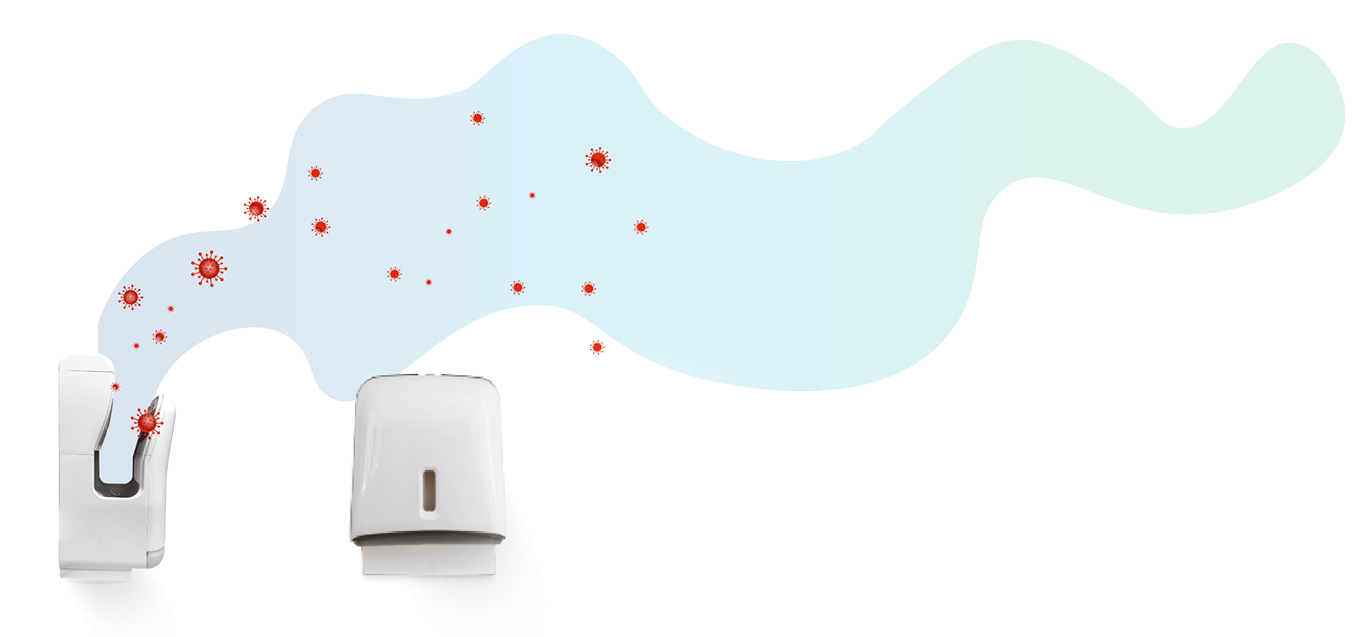
COMPARISON OF DIFFERENT HANDDRYING
METHODS: THE POTENTIAL
FOR AIRBORNE MICROBE DISPERSAL
AND CONTAMINATION
K Redway, E.L. Best. University of Westminster, UK
Found that the jet air dryer dispersed liquid from users’ hands further and over
a greater range (up to 1.5m) than the other drying methods (up to 0.75 m),
demonstrating the differing potential risks for airborne microbe dissemination,
particularly if handwashing is suboptimal.
2014

MICROBIOLOGICAL COMPARISON OF
HAND DRYING METHODS: THE POTENTIAL
FOR THE CONTAMINATION OF THE
ENVIRONMENT, USER AND BYSTANDER
E.L Best, P. Parnell, M.H. Wilcox. Microbiology Department, Old Medical School, Leeds General Infirmary,
Leeds Teaching Hospitals NHS Trust, Leeds, UK. University of Leeds, Leeds, UK
Found that air bacterial counts in close proximity to hand drying were
4.5-fold higher for the jet air dryer (70.7 cfu) compared with the warm
air dryer (15.7 cfu) (P = 0.001), and 27-fold higher compared with use of
paper towels (2.6 cfu) (P < 0.001). Airborne counts were also
significantly different during use of towel drying versus warm air dryer
(P = 0.001). A similar pattern was seen for bacterial counts at 1 m away.
Visualization experiments demonstrated that the jet air dryer caused
the most droplet dispersal.
2015
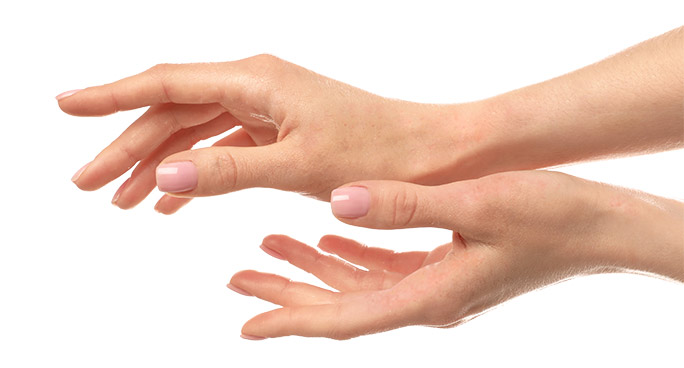
EVALUATION OF THE POTENTIAL FOR
VIRUS DISPERSAL DURING HAND
DRYING: A COMPARISON OF THREE
METHODS
K Redway, P.T. Kimmit. Department of Biomedical Sciences, Faculty of Science and Technology, University of
Westminster, London, UK.
Found that use of the jet air dryer led to significantly greater and further
dispersal of MS2 bacteriophage from artificially contaminated hands when
compared to the warm air dryer and paper towels.
HOW DO HAND DRYING METHODS
COMPARE IN TERMS OF
PATHOGEN DISPERSAL RISK?
2018

ENVIRONMENTAL CONTAMINATION BY
BACTERIA IN HOSPITAL WASHROOMS
ACCORDING TO HAND-DRYING
METHOD: A MULTI-CENTRE STUDY
E. Best, P. Parnell, J. Couturier, F Barbut, A. Le Bozec, L. Arnoldo, A. Madia, S. Brusaferro, M.H. Wilcox.
Microbiology, Leeds Teaching Hospitals, Leeds, UK. CHU Saint Antoine, Assistance Publique-Hôpitaux
de Paris, Paris, France. Department of Medicine, University of Udine, Udine, Italy. Microbiology, Leeds
Teaching Hospitals, Leeds, UK; University of Leeds, Leeds, UK.
Found that bacterial contamination was lower in paper towel versus jet
air dryer washrooms. Total bacterial recovery was significantly greater
from jet air dryer versus paper towel dispenser surfaces at all sites
(median: 100-300 vs 0-10 cfu; all P < 0.0001). In the UK and France,
significantly more bacteria were recovered from jet air dryer washroom
floors (median: 24 vs 191 cfu, P < 0.00001). UK meticillin-susceptible
Staphylococcus aureus recovery was three times more frequent and sixfold
higher for jet air dryer vs paper towel surfaces (both P < 0.0001). UK
meticillin-resistant S. aureus recovery was three times more frequent (21
vs 7 cfu) from jet air dryer versus paper towel surfaces or floors.
Significantly more enterococci and extended-spectrum
β-lactamase (ESBL)-producing bacteria were recovered from UK jet air
dryer versus PT washroom floors (P < 0.0001). In France, ESBL-producing
bacteria were recovered from dust twice as often during jet air dryer
versus paper towel use.
Multiple examples of significant differences in surface bacterial contamination, including by faecal and antibiotic-resistant bacteria, were observed, with higher levels in jet air dryer versus paper towel washrooms. Hand-drying method affects the risk of (airborne) dissemination of bacteria in real-world settings.
Multiple examples of significant differences in surface bacterial contamination, including by faecal and antibiotic-resistant bacteria, were observed, with higher levels in jet air dryer versus paper towel washrooms. Hand-drying method affects the risk of (airborne) dissemination of bacteria in real-world settings.
DOES MICROBE DISPERSAL RISK EXTEND
BEYOND THE WASHROOM?
2020
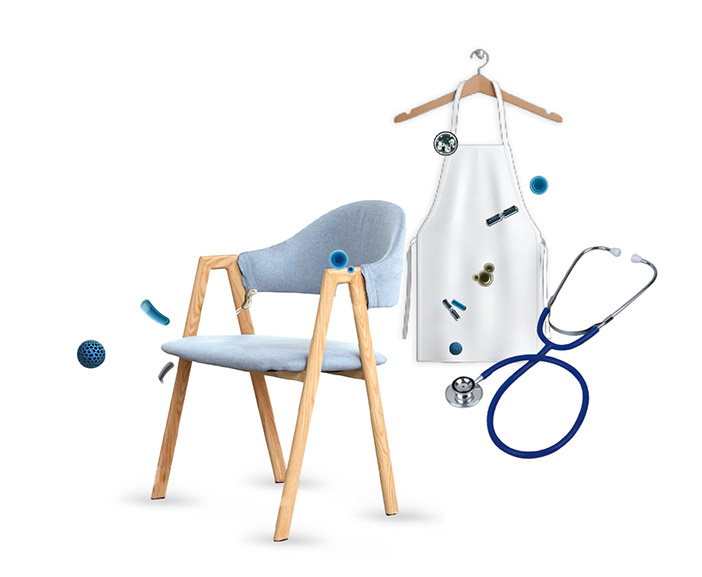
FROM THE HOSPITAL TOILET TO THE
WARD: A PILOT STUDY ON MICROBE
DISPERSAL TO MULTIPLE HOSPITAL
SURFACES FOLLOWING HAND DRYING
USING A JET AIR DRYER VERSUS
PAPER TOWELS
Ines B Moura, Duncan Ewin, M.H. Wilcox. Microbiology Department, Old Medical
School, Leeds General Infirmary, Leeds Teaching Hospitals NHS Trust, Leeds, UK.
University of Leeds, Leeds, UK
Found that the use of paper towels resulted in lower rates of virus
contamination on hands and clothing compared with a jet air dryer.
Consequently, significantly lower levels of virus contamination of multiple
hospital surfaces outside of the washroom were found after hands were
dried with paper towels rather than a jet air drier.
CAN DISPERSED MICROBES
FEASIBLY BE INHALED?
2022

ASSESSMENT OF POTENTIAL FOR
VIRAL CONTAMINATION OF USERS
AND ENVIRONMENT VIA AEROSOLS
GENERATED DURING HAND DRYING:
A PILOT STUDY
Ines B Moura, Karen Bentley, Mark H Wilcox. Microbiology Department, Old Medical School, Leeds
General Infirmary, Leeds Teaching Hospitals NHS Trust, Leeds, UK. University of Leeds, Leeds, UK
Found that virus contamination dispersed further and for a longer
period (up to 15 min post hand-drying) when using a jet air dryer.
The method chosen for hand drying can potentially impact the
airborne dissemination of microbial pathogens, including
respiratory virus and so potentially increase the risk of exposure
and infection for other washroom users.
Hand hygiene plays a crucial role in
overall hygiene. Hand drying,
following proper hand washing, is an
essential element of the two-stage
hand hygiene process and is vital in
preventing the spread of infection
and upholding public health.
The Hand Drying Discovery Roadmap
explores the relative effectiveness of
different hand drying options in
preventing the spread of microbes
and bacteria. Each study probes a
different facet of the hand drying
process and different hand drying
options and offers scientific insights
into the link between hand drying
method and broader hygiene.
The roadmap makes essential
reading for all those responsible for
upholding washroom hygiene and
protecting public health – from
procurement managers in hospitals
and public buildings through to
landlords, restaurateurs, and
hoteliers.
